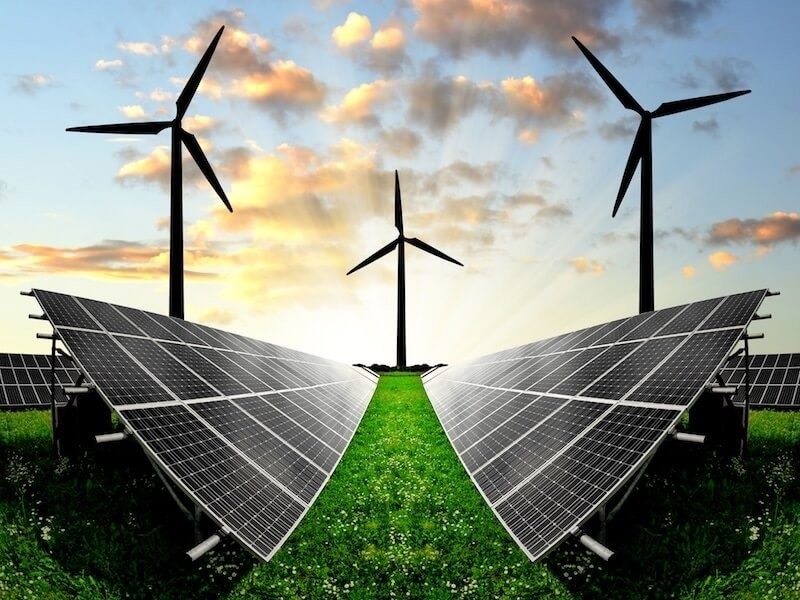Microgrid systems represent a decentralized approach to power distribution, enabling energy sharing among interconnected users. These systems are especially beneficial for integrating renewable energy sources, ensuring grid reliability, and improving energy access in remote areas. At the core of microgrid functionality lies the cables that connect power generation units, storage systems, and consumers. These cables ensure seamless energy sharing, stability, and flexibility within microgrids, enabling efficient and sustainable power distribution.
1. The Role of Cables in Microgrid Systems
Cables serve as the backbone of microgrid systems, facilitating power transmission and communication across the network. Their primary functions include:
- Power Distribution: Transmitting electricity from generation sources like solar panels, wind turbines, or traditional generators to consumers.
- Energy Storage Connectivity: Linking battery systems to the microgrid for reliable power storage and supply during peak demand.
- Data Communication: Supporting real-time monitoring and control through communication cables, which transmit data to manage energy flow.
2. Types of Cables Used in Microgrid Systems
Microgrids require different cable types tailored to specific applications and environments:
- Power Cables: High-performance cables transmit electricity efficiently across short and long distances within the microgrid.
- Communication Cables: Fiber optic or Ethernet cables enable data exchange for monitoring and control of the system.
- Hybrid Cables: Combining power and communication capabilities, hybrid cables reduce installation complexity and improve efficiency.
3. Enhancing Energy Sharing Through Cable Technology
Innovations in cable technology are critical for optimizing energy sharing within microgrids:
- Low-Loss Power Cables: Advanced materials minimize resistance, reducing energy loss during transmission and enhancing overall efficiency.
- Flexible and Lightweight Designs: Compact cables simplify installation in urban environments or remote locations, supporting microgrid scalability.
- Durable Coatings: Weather-resistant materials ensure reliable operation in harsh conditions, such as extreme temperatures or high humidity.
4. Connecting Renewable Energy Sources in Microgrids
Cables play a pivotal role in integrating renewable energy sources into microgrid systems:
- Solar Power Integration: Specialized cables connect solar panels to inverters and the microgrid, ensuring efficient energy flow.
- Wind Turbine Connectivity: High-voltage cables transmit electricity from turbines to storage units or directly to consumers.
- Distributed Energy Resources (DERs): Cables link multiple small-scale renewable energy units, enabling efficient distribution across the microgrid.
5. Ensuring System Stability with Energy Storage Cables
Energy storage is essential for maintaining stability in microgrid systems, and cables are critical for linking storage units to the network:
- Battery Connections: Reliable cables handle high currents and voltages required for charging and discharging battery systems.
- Thermal Management: Advanced insulation prevents overheating during high-power operations, ensuring safety and longevity.
- Bidirectional Energy Flow: Cables facilitate the two-way flow of electricity, allowing batteries to supply power during demand peaks and recharge during surplus production.
6. Overcoming Challenges in Microgrid Cable Design
Designing cables for microgrid systems involves addressing specific challenges:
- Voltage Fluctuations: Frequent changes in voltage due to renewable energy variability can strain cables.
- Solution: High-voltage cables with enhanced insulation manage fluctuations efficiently.
- Environmental Conditions: Outdoor installations face weather, UV exposure, and mechanical stress.
- Solution: Durable coatings and weather-resistant materials ensure long-term performance.
- Scalability: Expanding microgrids requires cables that support modular and flexible configurations.
- Solution: Modular cable designs enable easy upgrades and integration of additional resources.
7. Advancing Sustainability with Eco-Friendly Cables
Sustainability is a key focus in microgrid development, and cable manufacturers are aligning their products with eco-friendly practices:
- Recyclable Materials: Cables made from recyclable metals and polymers reduce environmental impact.
- Energy-Efficient Designs: Low-resistance materials minimize energy loss, improving the overall efficiency of microgrid systems.
- Durability for Longevity: Longer-lasting cables reduce the need for frequent replacements, minimizing waste.
8. Future Trends in Microgrid Cable Technology
Emerging trends are shaping the role of cables in microgrids, ensuring continued innovation:
- Smart Cables: Embedded sensors enable real-time monitoring of cable performance, allowing predictive maintenance and reducing downtime.
- Nanotechnology: Nano-engineered materials enhance conductivity, durability, and thermal performance.
- Wireless Alternatives: While cables remain vital, hybrid systems integrating wireless technologies offer flexibility for specific applications.
Conclusion:
Cables are a cornerstone of microgrid systems, facilitating energy sharing, supporting renewable integration, and ensuring stability across decentralized networks. By enabling efficient power transmission and communication, advanced cable technologies are driving the success of microgrid systems. Companies like Ducab are leading the way in developing innovative cable solutions tailored to the unique demands of microgrid systems, supporting the transition to a more sustainable and resilient energy future.
FAQs: How Cables Facilitate Energy Sharing in Microgrid Systems
- What role do cables play in microgrid systems?
Cables enable power transmission, energy storage connectivity, and data communication, ensuring seamless operation and energy sharing. - What types of cables are used in microgrids?
Microgrids use power cables, communication cables, and hybrid cables for transmitting electricity and data. - How do cables support renewable energy integration in microgrids?
Specialized cables connect renewable energy sources like solar panels and wind turbines to the microgrid, ensuring efficient power distribution. - What challenges do microgrid cables face?
Challenges include voltage fluctuations, environmental conditions, and scalability, which are addressed with advanced materials and modular designs. - How are cables advancing sustainability in microgrids?
Eco-friendly materials, energy-efficient designs, and durable constructions contribute to sustainability by reducing waste and energy loss. - What innovations are shaping microgrid cable technology?
Trends include smart cables with embedded sensors, nano-engineered materials for improved performance, and hybrid wired-wireless solutions.
